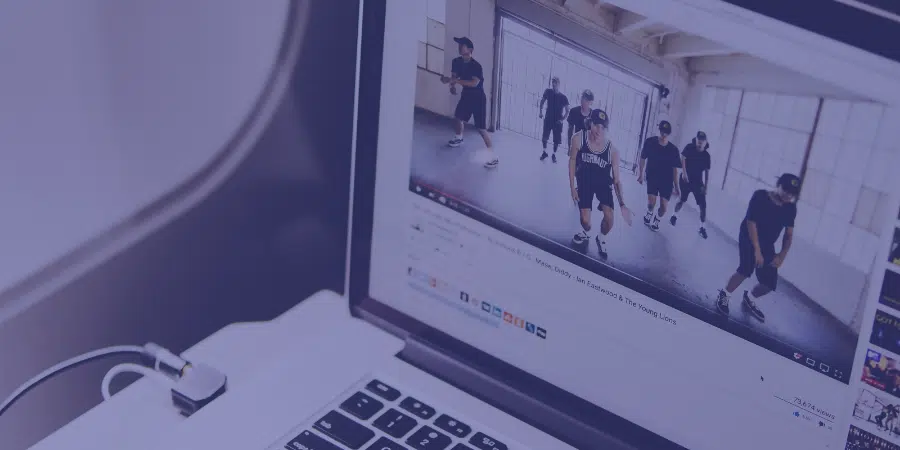Dance is an art form that has long been celebrated in cultures across the globe. Today, the dance industry continues to grow and change in exciting ways despite the impact of a global pandemic. Online platforms like YouTube provide access to larger audiences for long-term and aspiring dancers alike. Plus, virtual learning has opened up entirely new avenues of instruction for studios across the world. In this post, we’ll discuss some of the most important 2021 dance industry stats and trends. These key insights can help you position your studio for success in 2021 and beyond.
Dance Studio Revenue Stats
The number of dance studios in the U.S. continues to rise. While that might mean more competition, it’s great news overall for all of us in the industry. More access to studios means more people are drawn to dance and all of the benefits it has to offer. Here are key dance studio industry stats to keep in mind as the new year gets underway.
- The market size of the dance studio industry has grown by 3% per year from 2015 to 2020.
- As of 2020, there were approximately 54,627 dance studios operating in the U.S.
- According to ZipRecruiter, the average salary of a dance studio owner for nationwide job postings is $43,048.
- Dance studios offering Latin-inspired, fitness, fusion, and ballroom dance classes have particularly benefited from growing consumer demand.
- 5. Health clubs that offer dance classes along with fitness classes are a key source of new competition for the industry that is only expected to increase.

Impacts of COVID-19 On 2021 Dance Industry Stats
For the first time in history, Broadway has been dark for months. Dance studios across the world have been forced to get creative and introduce virtual classes. And, there is no doubt that the COVID-19 pandemic has had a devastating financial impact on the dance industry.
When it comes to teaching, dance studios across the country are adapting to online instruction. While most educators say there are drawbacks, these options are essential in order to help studios survive this pandemic.
Here’s what we know about the impact of COVID-19 so far.
- Revenue loss for New York City dance organizations, groups, and projects was estimated at nearly $24 million in August 2020, a number that is unfortunately expected to grow.
- 63% of professional dancers report cash flow issues.
- Only 8% of responding dance organizations have insurance coverage to help offset the effects of the pandemic.
- Disposable income gives people more discretionary funds to spend on dance classes and dance-related merchandise. Due to the COVID-19 pandemic, per capita disposable income was erratic and unpredictable over the course of 2020.
That being said, virtual lessons have allowed students to take classes from leading dancers from around the globe, all from the comfort of their own home. Even within the instability and loss, dancers continue to cultivate creative new ideas to reach their students and inspire a passion for dance.

Dance Demographics In 2021
Dance demographics allow us to take a closer look at the dance industry as a whole. By researching these numbers, we can learn more about the people who take an interest in dance and choose to pursue it as a profession. These stats also highlight the greater need for diversity and inclusivity—both in professionals and teachers—as we welcome a new generation of students into our classes.
Here are some of the most recent data available on dance demographics.
- More than 80% of dancers and choreographers are female, making them the more common gender in the occupation.
- The average age of male dancers and choreographers in the workforce is 31.8.
- The average age of female dancers and choreographers in the workforce is 27.1.
- Diversity across dancers and choreographers breaks out with 62% identifying as white (non-hispanic), 11.3% white (Hispanic), 11.7% as Black, 6.11% as Asian, and 6% identifying with multiple races/ethnicities or other.
How Many Professional Dancers Are There In The U.S.?
Dance statistics related to dance as a profession are also important. This is what we know about the current state of the professional dance industry, based on the most up-to-date research.
- The median hourly wage for dancers is $19.96.
- The median hourly wage for choreographers is $30.72.
- The average hourly wage for dance instructors in the U.S. is $23.91, according to PayScale.
- The most common industries employing dancers and choreographers, by a number of employees, are performing arts companies, schools and places of instruction, and spectator sports.
- Colleges, universities, and professional schools represent the top paying industry for dancers.
- New York, California, Texas, Nevada, and Massachusetts are the top five states for dance employment.

Dance Industry Overview In Media
The ever-changing world of technology changes the way we access information and entertainment. Dance as both a hobby and profession is undoubtedly affected by this. With the rise of dance television shows, YouTube channels, TikTok, and Instagram accounts, people have more ways to find inspiration.
Here is a dance industry overview into the influential world of social media.
- Matt Steffanina reigns as the top individual dance choreographer on YouTube with more than 12 million subscribers across four different channels.
- With a focus on the hugely popular K-POP dance styles, 1MILLION Dance Studio is one of the largest dance studio accounts on YouTube with 22.8 million subscribers.
The COVID-19 pandemic has also led to increasingly creative ways of sharing dance routines online. You only need to watch Dance Theater of Harlem’s stunning ballet street routine to see how social media opens up new opportunities for performance and fundraising today.
What Dance Studio Industry Stats 2021 Show Us
By looking at the current state of dance industry stats 2021, you can anticipate much more changes in the upcoming year.
These dance studio industry stats show tremendous opportunities for growth. For example, if your studio has highly-competitive students interested in pursuing dance as a profession, prepare them for the jobs that will hopefully be available again soon.
Likewise, the highest-performing YouTube channels—which focuses on K-POP dance and Steffanina’s hip-hop dancing—show new trends for people’s attention when it comes to dancing. Offering classes at your studios in these styles—either online or in-person—could be a way to make a name for yourself in an increasingly competitive industry.
Furthermore, the marketing opportunities available through social media can’t be overstated, especially as we continue to navigate the COVID-19 pandemic. As YouTube, TikTok, and Instagram continue to boost the success of individual dancers and studios, these platforms can have a serious effect on enrollment numbers. By making your studio visible on social media, you have the chance to reach more people in your community.
Prepare Your Studio For The Future
You opened a dance studio because of your passion, but as we all learned in 2020, it takes much more to keep your business running smoothly. Beyond your role as a teacher or choreographer, you also take on the roles of business manager and mentor.
With the right dance studio management software, you can streamline your administrative tasks and grow your studio. Studio Director acts as your business partner, helping you stay organized, while allowing you to focus on important things like industry trends and new opportunities.
Our software also prioritizes set-up and management of virtual or hybrid classes. We can help you integrate online class registration and scheduling directly on your website, even allowing students to log into their classes from your website or portal. Studio Director offers virtual classrooms through a number of tools, including Zoom and Google.
Start fresh in 2021. Take our interactive tour to get a glimpse of how Studio Director works.




